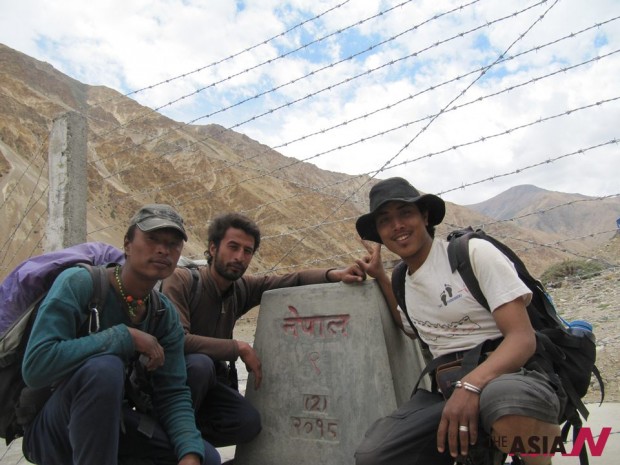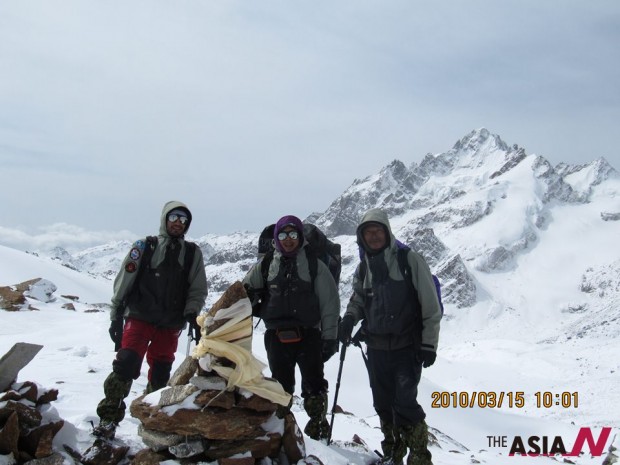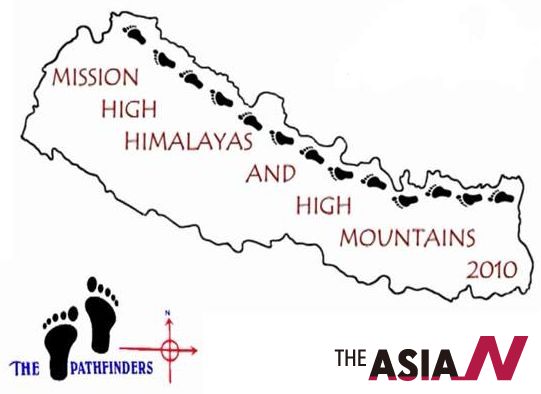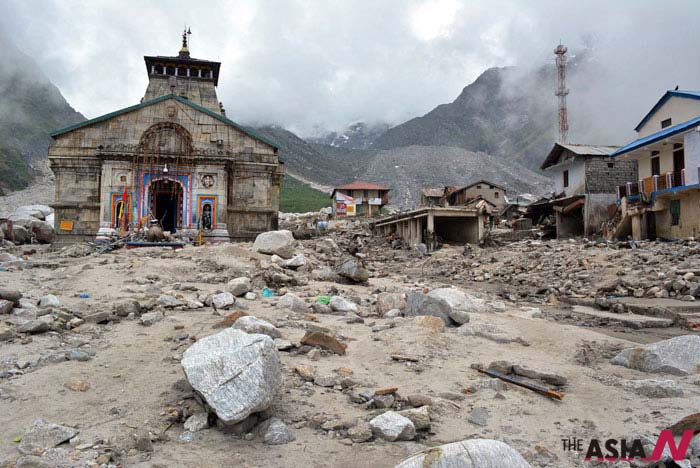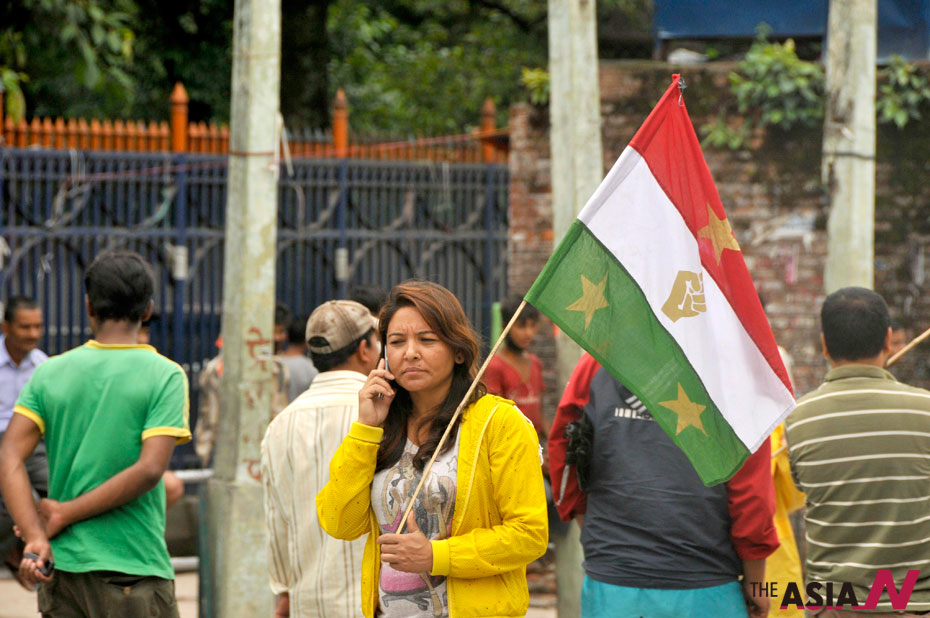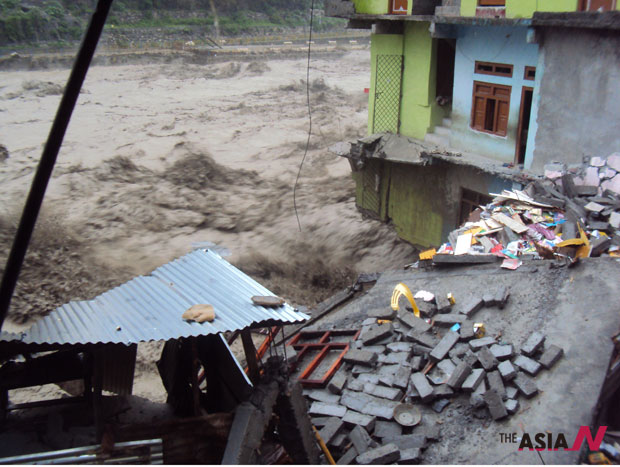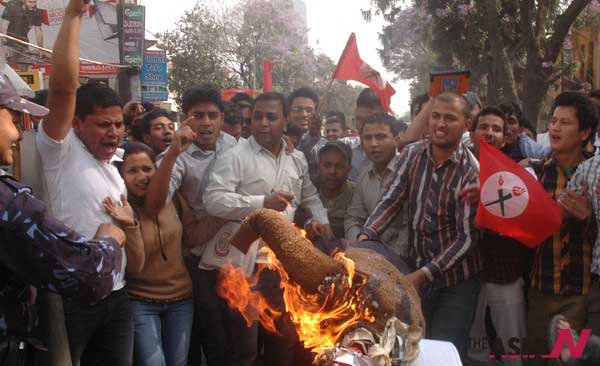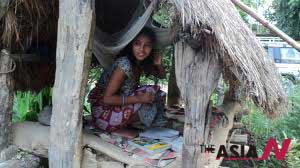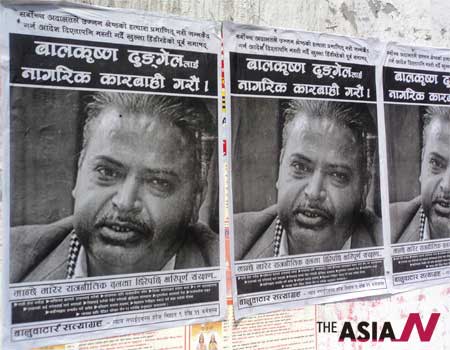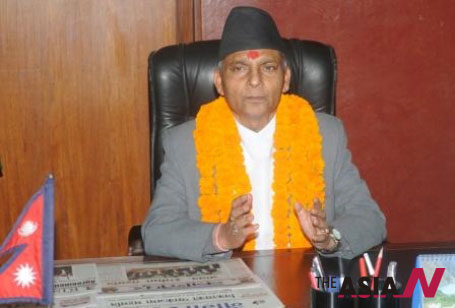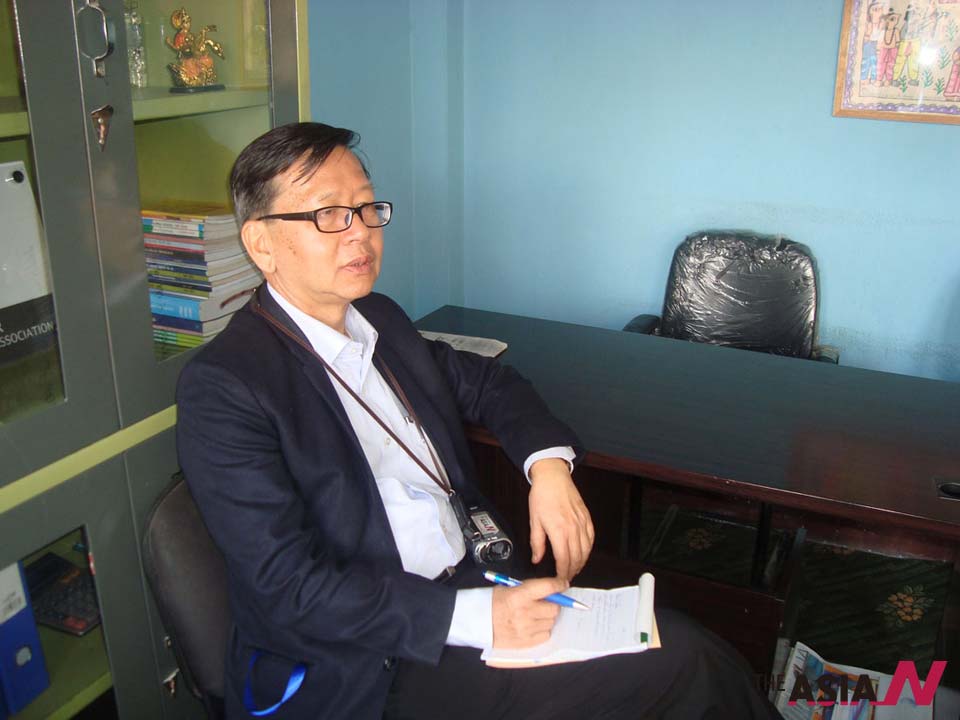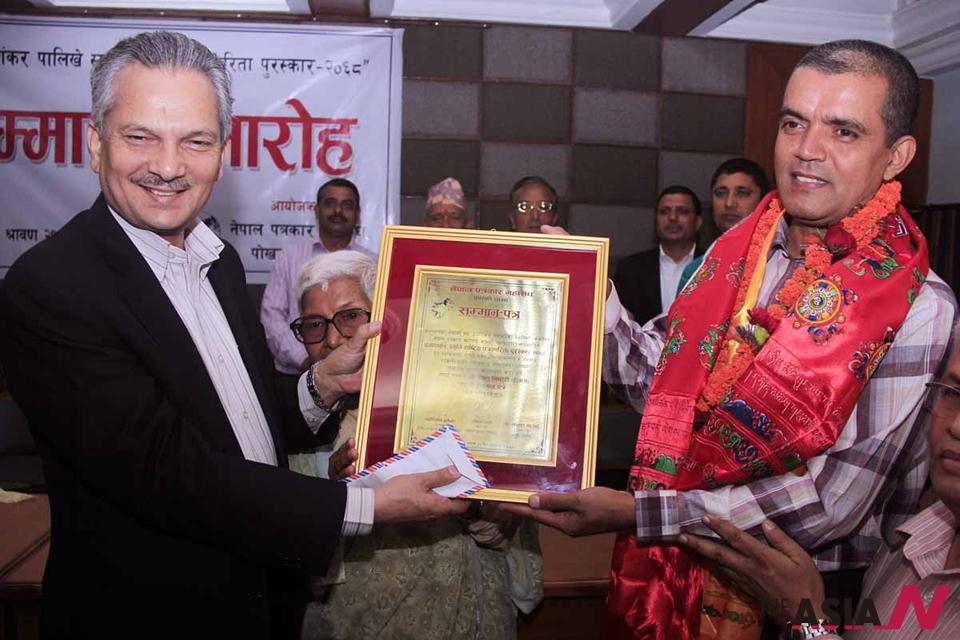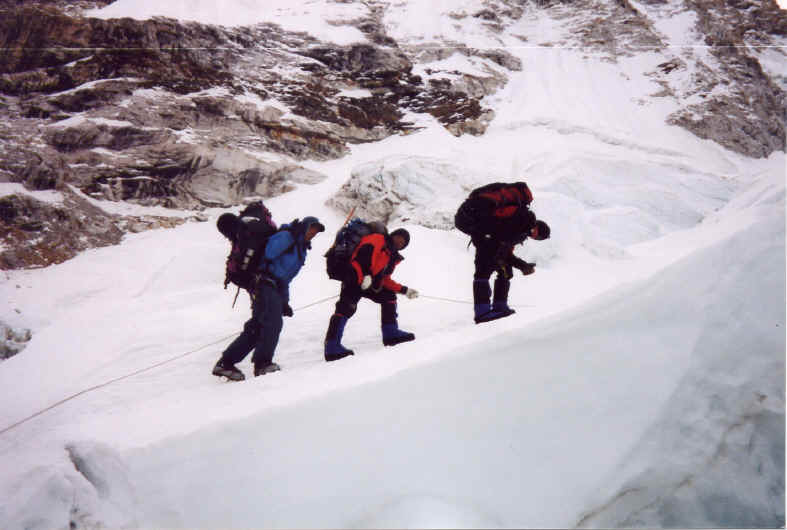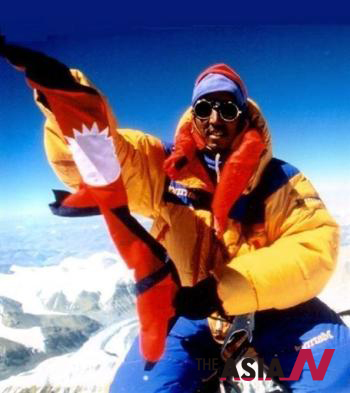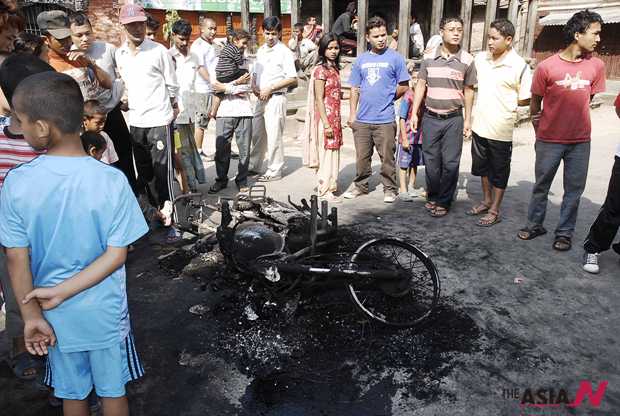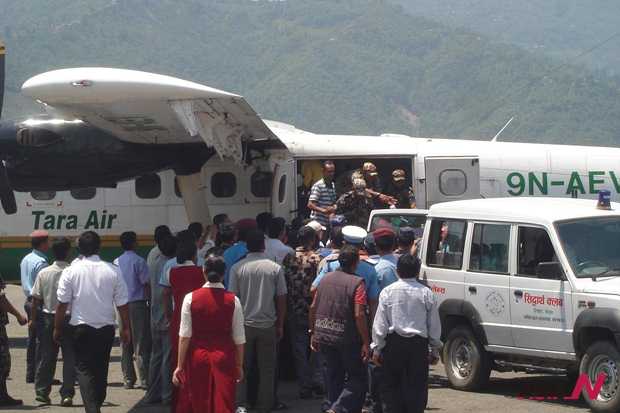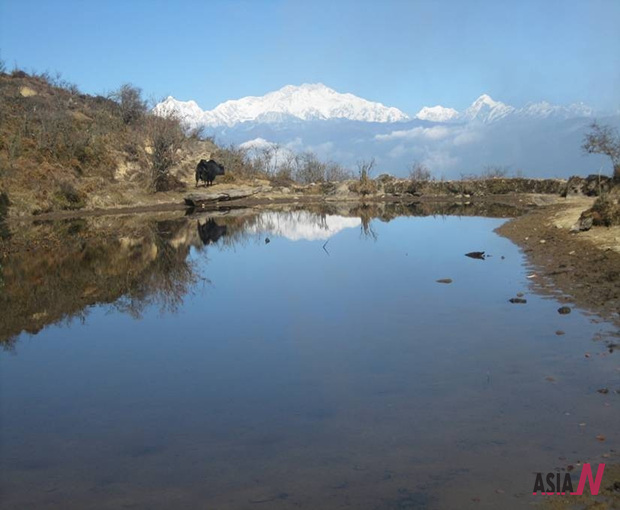
Three Kathmandu youths successfully trek gruelling Himalayan trails
Dipesh Joshi, Surose Maharjan and Raju Maharjan, the three boys in Kathmandu were the first persons to trek along the high Himalayan trails of Nepal twice in four years in 2007 and 2010. However, their adventurous trekking remained almost unknown for years until when Appa Sherpa and a western lady who crossed the trail months after the boys crossed it made news headlines around the world for the same feat.
The injustice of local media to these three boys was apparent when they got a chance to exhibit photographs of their adventurous trekking during the recently concluded Kathmandu International Mountain Film Festival in Kathmandu. These three boys are now busy reducing the 28-hour documentary they shot during their 2010 trekking to a 30-minute film. The team led by Joshi, 30, had managed to accomplish the 121-day trekking along the high mountains.
They had begun the journey from Sikkim, India on 1st March 2010 and concluded it in Hilsa in Humla, Nepal, after 121 days on 28 June. They had named their project as Mission High Himalayas and High Mountains 2010 and completed it successfully by passing below all eight 8,000 metres plus mountains of Nepal.
They walked through 1700 km trail carrying loads of gas and tents and crossed 11 passes over 5,000 metres. Although they faced several ordeals while passing through the high trails in the summer, they never thought of abandoning the journey. “It rained heavily, there was lightning and wind but we were not discouraged from our mission,” said Surose, 28, and Raju, 28, while sipping tea in a recent morning here.
They spent as many as 10 days by eating only potatoes in the eastern mountains while they saw only two villages in an eight-day trekking in Dolpa in western Nepal. “As rice, the main food of Nepalese, was not available in the houses of the poor people in the high mountains, we had to content ourselves with potatoes. I felt what hunger actually is,” said the trekkers.
These trekkers who lost 7 to 8 kg of weight in 121 days had to manage with the logistics they carried when departing from Kathmandu for almost 60 days ago as they failed to get any additional food from Kathmandu until they arrived in Barhabise, Sindhupalchowk, some 150 km away from Kathmandu. “One of my friends was to join us in Lukla near Mt. Everest and he had promised to carry our goods to Lukla but due to bad weather the plane could not land there and we did not get the promised logistics,” said Dipesh.
They got additional foods and money in Kagbeni in Mustang. They got the support from their families and a few organizations.
These boys used to buy foods in the markets they passed through or get them from the villagers of the routes. They even spent some nights in the warm beds of the villagers instead of spending them in their tents. The people in villages were so hospitable that they fed us with whatever they had. They cooked meal, boiled potatoes and served us locally brewed liquors, said Dipesh.
According to Surose, the liquor served them as medicines and cured their body pains caused by constant walks. As they were tired of walking, they werer able to get sound sleep both in tents and homes of the villagers. Interestingly, none of them fell ill during the 4-month trekking in the high mountains. Among the 11 passes they crossed, the highest was 5,755 metre Tashi Labste and the lowest 5,120 metres Ganja La and Newar La. They crossed several rivers and beautiful landscapes during their trekking.
It was water what they got in abundance during the trek. They said they quenched their thrust and hunger by drinking the cool water from the high Himalayas. “If there was no water around, we would melt snow to drink,” Surose said. They used to take bath and wash clothes in the rivers if it was a sunny day.
The route they passed through became popular as ‘The Great Himalayan Trail’ after world famous mountaineer Appa Sherpa trekked on it two years after the three boys crossed it.
Earlier in 2007, this group had completed Mechi-Mahakali trip covering the entire length of Nepal in 97 days. However, the 2007 trek was from the lower altitude and they covered the journey staying in the houses of the villages. “Then we did not carry tents and gas, we only had sleeping bags and mattresses with us,” they said. But they made no news then as well.
Now these three pathfinders are trying to organize their adventurous journey and inform the world about their acts. This document is a part of their move to this direction. These three boys have been friends from their childhood. They grew interest in trekking while they were students in Kathmandu. They went to trekking to Manang, Mustang, Langtang and Annpurna region during their college days. They were so interested in adventurous journey that they gave up their study after completing grade 12 and dedicated their full time to trekking on their own.
“We gave up our study although we wanted to continue it,” said Dipesh. Dipesh who also works as a tour guide has not involved in business lately while his two friends have been giving continuity to their family-based businesses. Unlike other trekkers, these boys also knew about the social, economic and cultural aspects of the people in the high Himalayan range.
“We found Newars in almost all Bazaars of the high Himalayas but in villages we found only Lamas, Sherpas and Bhotes in the east and the Tibetans in the west,” Dipesh said. The eastern part of the country was fertile than the western part, hence poverty is random in the west, said Raju. Dipesh also said that the west is dry and barren where nothing can be grown.
They found Shey Phokshundo and Rara to be the most beautiful places they passed through. Enthralled by the beauty of nature, these youths suggested that roads should not be built in the Himalayan region but they must be built in the central hills to provide facilities to the people living there.



